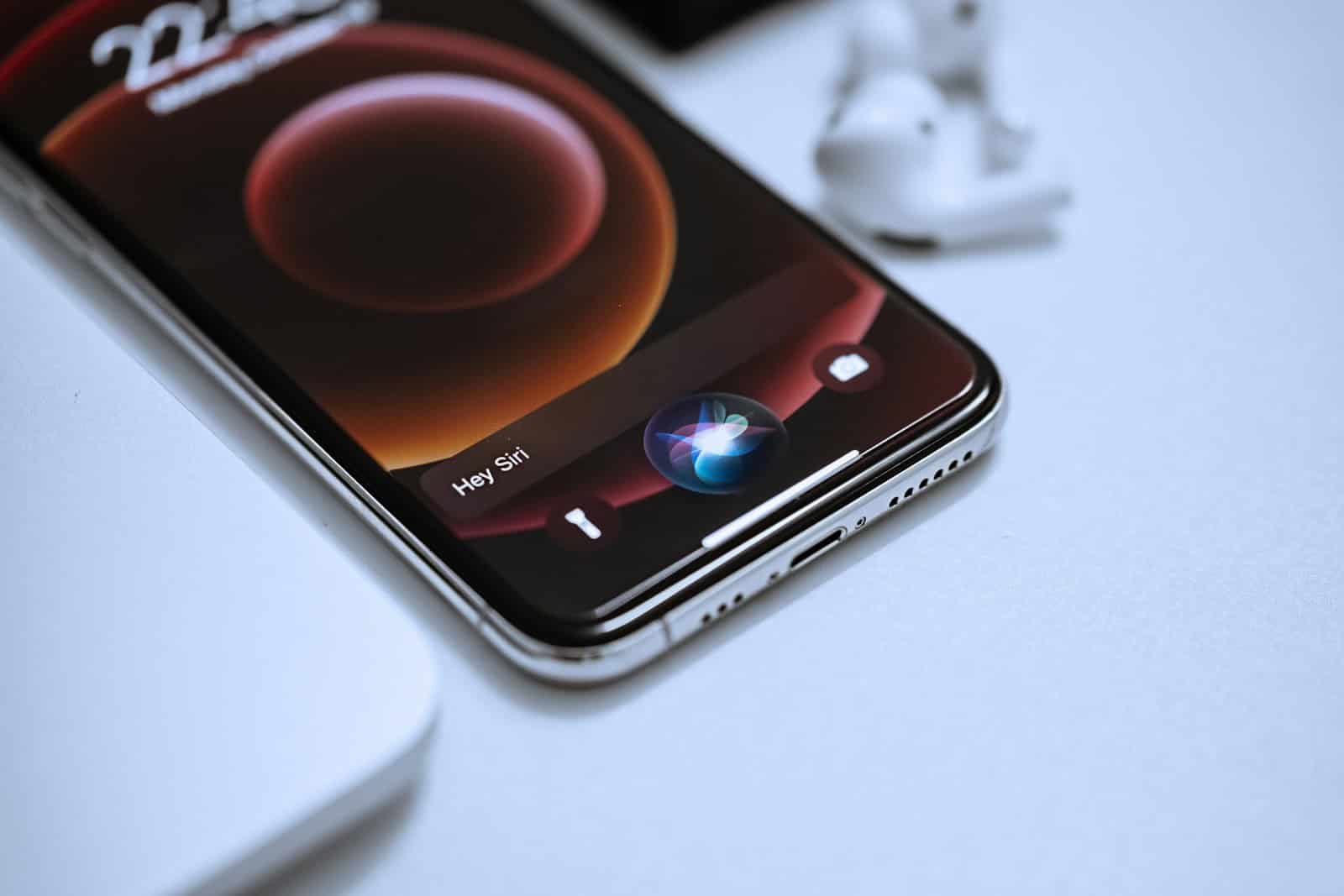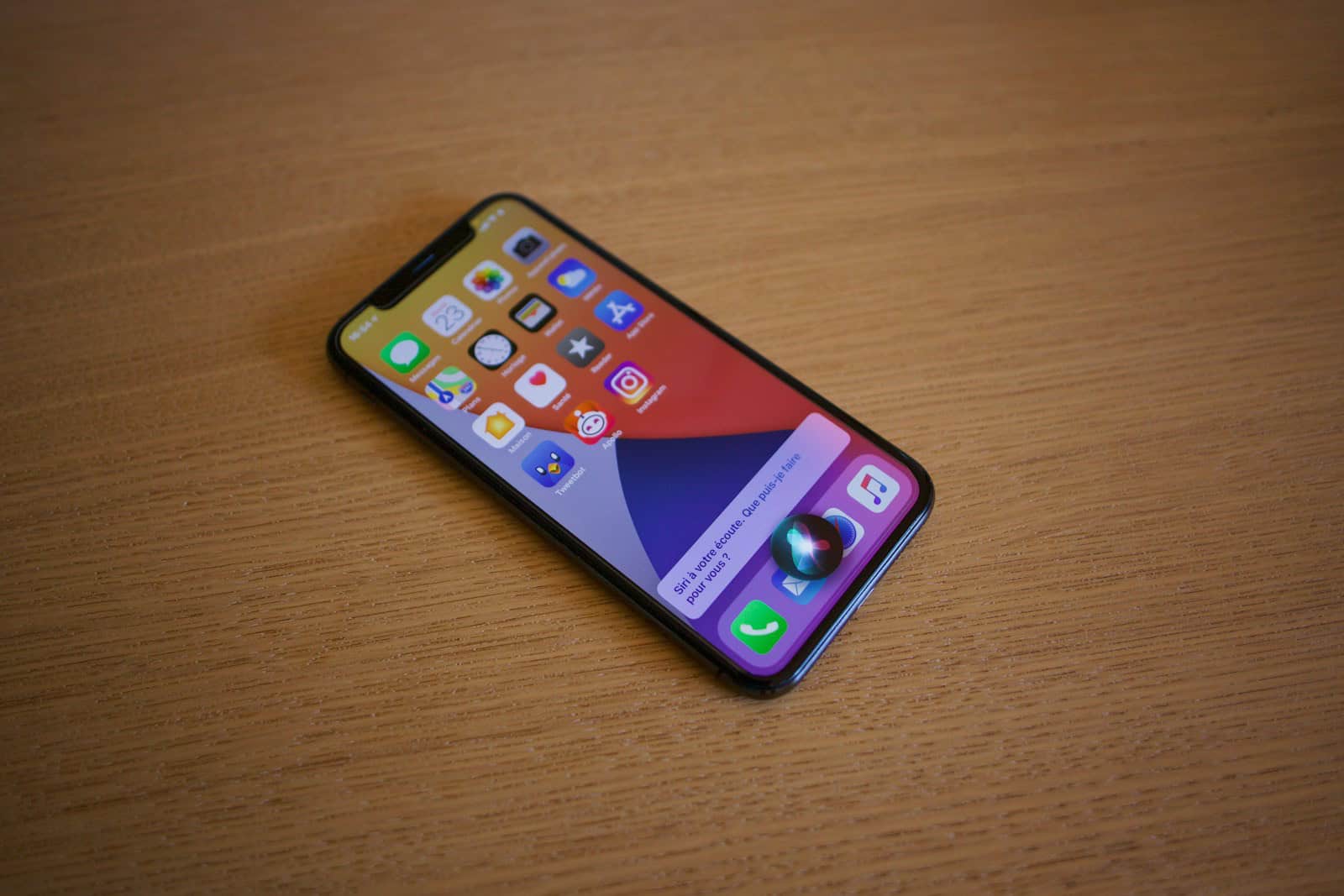After years of lagging behind Google Assistant and Amazon Alexa in both intelligence and usability, Apple is finally taking a dramatic leap forward. The company is rebuilding Siri from scratch, using powerful large language models (LLMs) to create a smarter, more conversational digital assistant—one that can compete in the age of ChatGPT and Gemini.
This marks a pivotal shift in Apple’s AI strategy, signaling that the company is ready to move past Siri’s outdated limitations and deliver an assistant that’s genuinely helpful, contextual, and intelligent. Here’s what we know so far—and why this could change the way you interact with your Apple devices.

What’s Changing With Siri?
Apple’s new initiative, internally referred to as “LLM Siri,” isn’t a patch or upgrade to the existing Siri—it’s a complete rebuild. This clean-slate approach allows Apple to jettison the rigid framework that’s hampered Siri’s evolution for over a decade. Instead of relying on fixed responses or canned commands, the new Siri will leverage large language models, similar to those that power ChatGPT or Google’s Gemini, to generate responses in real time based on your query’s context.
This means Siri could finally understand follow-up questions, remember previous interactions, and perform more advanced tasks across apps—like drafting emails, summarizing webpages, or helping with creative writing. It’s part of Apple’s larger plan to integrate generative AI directly into the iPhone experience in a way that feels natural and useful.
Notably, Apple wants to avoid the pitfalls of AI assistants that rely heavily on the cloud. Instead, the company is doubling down on on-device intelligence, using differential privacy and secure processing to protect user data while still delivering advanced AI performance.
Privacy First – With AI
Unlike competitors who often rely on server-side processing, Apple is betting big on privacy-preserving AI. Siri’s new brain will operate largely on-device, using synthetic training data generated through differential privacy to ensure no identifiable user information is ever exposed.
This is a critical differentiator. Apple wants its assistant to be just as smart as rivals, but without compromising the trust of its users. The company is also exploring safe, limited forms of web access for Siri—meaning it could potentially answer broader questions by sourcing and summarizing information in real time, all while keeping your data locked down.

Launch Timeline: Siri’s AI Reboot Coming in iOS 19
The reengineered Siri is expected to debut with iOS 19, slated for release in spring 2026. While iOS 18—expected to be previewed at WWDC 2025—will introduce some AI enhancements, the true overhaul will come with iOS 19 and Apple’s new generation of hardware, which will be built to fully support on-device LLMs.
This new Siri will completely replace the existing system, marking the end of a legacy that began in 2011 and struggled to keep pace with modern voice assistants. Developers and early testers will likely get a preview as part of Apple’s beta cycle in 2025.
New Leadership, New Direction
To spearhead the overhaul, Apple has brought in Mike Rockwell, the former head of its Vision Pro team. Rockwell now leads Siri’s engineering team and has restructured the division to focus on four pillars: speech, language understanding, performance, and user experience. This internal reshuffling mirrors Apple’s broader strategy of embedding AI across its product lines, not just in Siri but also in tools like Spotlight, Safari, Messages, and Photos.
Rockwell’s involvement also hints at cross-device intelligence—expect a Siri that works fluidly between your iPhone, Vision Pro headset, and Mac.
Why This Matters: Apple’s AI Awakening
Apple’s reinvention of Siri comes at a time when generative AI is becoming a standard feature in tech products. From Microsoft Copilot to Google’s Gemini, the digital assistant space is quickly evolving into something far more powerful than voice commands or canned responses. Siri, once the pioneer, became an afterthought—but Apple’s new push suggests it’s ready to reclaim its place.
However, rebuilding Siri isn’t just about catching up. It’s about reshaping how users interact with their devices—making voice input as intuitive, responsive, and context-aware as typing or tapping. And if Apple can pull it off without compromising privacy or performance, Siri 2.0 might just set a new standard for AI on consumer devices.
With iOS 19 and a new era of Apple AI on the horizon, the next version of Siri could become one of the most important features in Apple’s ecosystem—and a major turning point in the history of digital assistants.
Siri Hacks and Commands You Should Know
Siri, your iPhone’s virtual assistant, can do more than you might think. Many people only use Siri for basic tasks like making calls or checking the weather. You can transform Siri into a powerful tool that saves time and makes your daily routine easier with these hidden tricks and commands. From adding items to shared grocery lists to setting up meetings or controlling your smart home devices, Siri has capabilities that most iPhone users never discover.
These Siri hidden hacks can turn a simple voice assistant into your personal productivity partner. Try asking Siri to remind you about something when you arrive at a specific location, or have it read your latest messages while you’re driving. You can even use Siri for entertainment with jokes and games when you need a quick laugh.
Whether you own an iPhone, iPad, or Mac, learning to control apps with your voice can change how you interact with your devices. Many users are surprised to learn they can ask Siri to create calendar events, send messages to specific contacts in group chats, or find photos from particular dates or locations—all without touching the screen.
Siri has evolved significantly over the years, becoming more capable and integrated into the Apple ecosystem. With the impending improvements leveraging LLMs, it’s only going to get better. Here are some current Siri hacks and commands you should know to get the most out of your Apple devices:
General Productivity & Information
- Open Apps: “Open [App Name]” (e.g., “Open Mail,” “Open Settings”).
- Set Reminders: “Remind me to [task] at [time/location]” (e.g., “Remind me to call Mom when I get home,” “Remind me to buy milk tomorrow at 5 PM”).
- Set Alarms & Timers: “Set an alarm for 7 AM,” “Wake me up in 30 minutes,” “Set a timer for 15 minutes.”
- Quick Notes: “Note that [information]” or “Create a note about [topic].”
- Calculations & Conversions: “What is 15% of 250?”, “How many ounces are in a liter?”, “Convert 50 euros to dollars.”
- Definitions & Etymology: “Define [word]”, “What’s the etymology of [word]?”
- Translations: “Translate ‘Hello’ to Spanish,” “How do you say ‘Where is the restroom?’ in French?”
- Weather: “What’s the weather like today?”, “Will it rain tomorrow?”, “What’s the temperature in London?”
- News: “Tell me the news,” “What’s the latest in tech news?”
- Web Search: “Search for [topic] on the web,” “Google [query].”
- Find Photos: “Show me photos from [date],” “Show me photos of [person],” “Show me photos from [location].”
- Check Battery: “What’s my battery percentage?”
- Device Control: “Turn on/off Wi-Fi,” “Turn on/off Bluetooth,” “Turn on/off Flashlight,” “Increase/decrease brightness.”
- Music Control: “Play [song/artist/album],” “Skip this song,” “Play my running playlist,” “Turn on shuffle.”
Communication
- Calls: “Call [Contact Name],” “Call [Phone Number],” “Redial last number.”
- Messages: “Send a message to [Contact Name] saying [message],” “Read my new messages,” “Reply [message].”
- FaceTime: “FaceTime [Contact Name],” “FaceTime audio [Contact Name].”
- Email: “Send an email to [Contact Name] about [subject] saying [message].”
Navigation & Travel
- Directions: “Directions to [address/place],” “How do I get to [destination] by [car/foot/public transport]?”
- Traffic: “What’s the traffic like to work?”, “Are there any traffic jams near me?”
- “Where’s my car?”: If your iPhone is connected to your car via Bluetooth or CarPlay, Siri can remember your parking spot.
- Flight Status: “What’s the status of flight [flight number]?”
- Find Nearby: “Find the nearest [type of business]” (e.g., “Find the nearest coffee shop,” “Find the nearest gas station”).
Smart Home Control (HomeKit)
- Lights: “Turn on/off the lights,” “Dim the lights in the living room,” “Set the bedroom lights to blue.”
- Thermostat: “Set the temperature to 72 degrees,” “Increase/decrease the thermostat.”
- Scenes: “Set my ‘Good Morning’ scene,” “Activate ‘Movie Night’ scene.”
- Security: “Lock the front door,” “Is the garage door open?”
- Cameras: “Show me the front door camera.”
Hidden Gems & Fun
- Correct Pronunciation: If Siri mispronounces a name, say, “That’s not how you pronounce [name].” Siri will then prompt you to teach it the correct pronunciation.
- Remember Relationships: “Call my wife,” “Text my brother.” (First, tell Siri: “My wife is [Contact Name]” or “My brother is [Contact Name].”)
- Flip a Coin/Roll a Die: “Flip a coin,” “Roll a die,” “Roll a 20-sided die.”
- Identify Song: “What song is this?” (while music is playing in the background).
- Jokes/Stories: “Tell me a joke,” “Tell me a story.”
- Random Facts: “Tell me something interesting.”
- “Sing me a song” / “Beatbox for me”: Siri’s musical talents are… unique.
Accessibility Features
- Type to Siri: If you prefer typing your requests, go to Settings > Accessibility > Siri, and turn on “Type to Siri.”
- Siri Pause Time: Adjust how long Siri waits for you to finish speaking in Settings > Accessibility > Siri.
- Speaking Rate: Change Siri’s speaking speed in Settings > Accessibility > Siri.
- Announce Notifications: Have Siri announce notifications on your speaker, headphones, or CarPlay (Settings > Accessibility > Siri).
- Call Hangup: Siri can end phone and FaceTime calls (Settings > Accessibility > Siri > Call Hangup).
- Listen for Atypical Speech: Helps Siri recognize a wider range of speech patterns (Settings > Accessibility > Siri).
As Apple continues to integrate more advanced LLM capabilities into Siri, expect even more nuanced and conversational interactions, making these hacks and commands even more powerful and intuitive!
Key Takeaways
- Siri can handle complex tasks like adding items to shared apps, setting location-based reminders, and controlling smart home devices with simple voice commands.
- Using voice commands for everyday tasks saves time and increases productivity across all Apple devices including iPhone, iPad and Mac.
- Customizing Siri settings and learning specific command phrases greatly improves the accuracy and usefulness of this virtual assistant.
Understanding Siri and Its Capabilities
Siri is Apple’s powerful voice assistant that helps users perform tasks, get information, and control their devices with simple voice commands. This technology has grown significantly in both intelligence and functionality since its introduction.
History and Evolution of Siri
Siri began as a standalone app created by a startup in 2010, which Apple acquired later that year. The voice assistant officially launched with the iPhone 4S in 2011. At first, Siri had limited abilities, mainly handling basic tasks like setting alarms and sending messages.
With each iOS update, Apple added new features to make Siri smarter. In 2016, Apple opened Siri to third-party developers, allowing the assistant to work with non-Apple apps. This was a game-changer for users.
Recent updates have given Siri more natural-sounding voices and Apple Intelligence capabilities, making conversations feel more human. The assistant now understands context better, remembers previous questions, and offers more personalized responses based on how you use your devices.
Core Functions of Siri
Siri can perform hundreds of different tasks across Apple devices. Some of the most useful functions include:
- Making calls and sending texts
- Setting reminders, alarms, and calendar events
- Playing music and podcasts
- Providing weather updates and news
- Answering questions using web information
- Controlling smart home devices
The “Hey Siri” feature lets users activate the assistant hands-free on iPhone, iPad, and Mac. This is especially helpful when cooking or driving.
Siri is interactive and helpful beyond just answering questions. When Siri shows web links in response to a query, users can tap them to open the information in their browser.
Accessibility Features
Siri makes Apple devices more accessible to everyone. For people with vision impairments, the voice assistant can read screen content aloud and describe what’s happening on the display.
Users with mobility challenges can control nearly every aspect of their iPhone or iPad using just their voice. This includes opening apps, adjusting settings, and navigating interfaces.
Siri also supports Type to Siri mode, which lets users type their requests instead of speaking them. This feature helps people who have speech difficulties or who need to use Siri in quiet environments.
Voice Feedback settings can be customized to match each person’s needs, with options to have Siri always speak responses or only speak them when “Hey Siri” is used. These customization options help everyone use their devices more effectively.
Activating and Interacting with Siri
Getting the most from Siri requires knowing the right ways to activate it and speak commands. These simple techniques can make your iPhone experience more efficient and enjoyable.
Using ‘Hey Siri’
Enabling “Hey Siri” is quick and simple. Open the Settings app, scroll down and tap “Siri & Search,” then make sure “Listen for ‘Hey Siri'” is toggled on. This hands-free option works when your iPhone is nearby.
For privacy or battery conservation, you might prefer manual activation. Press and hold the side button on newer iPhones or the home button on older models to call Siri without speaking the wake phrase.
Typing to Siri offers another option. Users can double-tap the bottom of the screen to type requests instead of speaking them. To enable this feature, go to Settings > Apple Intelligence & Siri and configure the typing options.
Voice Command Best Practices
Clear, direct commands work best with Siri. Speak at a normal pace and volume, avoiding background noise when possible.
Be specific with your requests. Instead of “Set an alarm,” try “Set an alarm for 7 AM tomorrow.” This precision helps Siri understand exactly what you need.
Try these effective command patterns:
- Action requests: “Call Mom” or “Send a text to John”
- Questions: “What’s the weather in Chicago?” or “How tall is the Empire State Building?”
- App control: “Open Camera” or “Play music by Taylor Swift”
Creative commands like “Hey Siri, open the gate” can be set up through the Shortcuts app to perform complex tasks with a simple phrase.
Customizing Siri Responses
Siri can be tailored to your preferences. To change Siri’s voice, go to Settings > Siri & Search > Siri Voice, where you can select different accents and genders.
Control how you call on Siri by going to Settings > Siri & Search > Listen for. This menu lets you choose activation options that work best for your needs.
Siri can announce messages through AirPods or compatible headphones. Enable this by going to Settings > Siri & Search > Announce Notifications.
Some users create unique Siri shortcuts for common tasks. For example, saying “Hey Siri, I’m driving home” could trigger actions like sending a text to family and opening navigation.
Training Siri to recognize your voice better happens naturally over time, but you can speed up the process by correcting misunderstandings when they occur.
Siri for Entertainment and Creativity
Siri offers more than just practical help—it can be a source of fun and creative interactions. Apple’s voice assistant comes with hidden features that can tell stories, play games, and even respond to magical commands.
Interactive Stories with Siri
Siri can be a storyteller when you need entertainment. Just say “Tell me a story” and Siri will share a short tale to brighten your day. These stories are often simple but entertaining.
The stories change regularly, so you’ll rarely hear the same one twice. Some stories are funny, while others might be surprising or thought-provoking.
Kids especially love Siri’s storytelling abilities. During the holiday season, try asking about Santa Claus—Siri has special responses that keep the magic alive for children.
You can also ask Siri to tell you a joke, a poem, or even sing a song. These features make Siri more than just a digital assistant—it becomes an entertainment companion.
Siri and Magical Commands from Harry Potter
Harry Potter fans will be delighted to know that Siri responds to many spells from the wizarding world. Say “Lumos” to turn on your iPhone’s flashlight, mimicking the light-creating spell from the books and movies.
When you’re done, say “Nox” to turn the flashlight off—just like Harry would extinguish his wand light. These commands add a touch of magic to everyday phone functions.
Other Harry Potter spells that work with Siri include “Accio,” which prompts a clever response about summoning objects. Try “Silencio” for a comment about silencing charms, or “Sonorus” for volume-related humor.
More obscure spells like “Homenum Revelio” and “Point Me” also trigger special responses. These Easter eggs make using your iPhone more fun for Potter fans of all ages.
Siri for Daily Assistance
Siri transforms your iPhone into a powerful personal assistant that helps manage communications, schedule daily activities, and control your devices with simple voice commands. These practical features can save time and make everyday tasks much easier.
Facilitating Communication
Siri excels at helping you stay connected with minimal effort. You can make calls by simply saying “Call Mom” or “FaceTime Sarah.” This works great when your hands are busy or while driving.
Need to send a quick message? Just say “Text Alex I’m running 10 minutes late.” Siri will compose and send it for you without you needing to type.
Siri can also help locate friends and family. Try “Where is John?” to use Find My Friends to check a loved one’s location (with their permission, of course).
When you need quiet time, ask Siri to “Turn on Do Not Disturb” or “Set Focus to Work” to block unwanted notifications.
Organizing Your Day
Siri makes managing your calendar simple with voice commands. Say “Add dentist appointment to my calendar on Tuesday at 2 PM” and it’s done instantly.
Setting reminders is just as easy. Try “Remind me to take out the trash when I get home” or “Remind me to call Mom tomorrow at noon.”
Need an alarm? Say “Wake me up at 6:30 AM” or “Set a timer for 20 minutes” when cooking.
For quick information while planning your day, ask Siri about:
- Weather: “What’s the forecast for tomorrow?”
- Directions: “How do I get to the nearest gas station?”
- Compass directions: “What direction am I facing?”
Smart Device and App Management
Siri streamlines interaction with your phone and connected devices. Say “Open Instagram” or “Open Mail” to launch apps without searching through screens.
Adjust settings with commands like “Set volume to 50%” or “Turn on Bluetooth.” These quick adjustments save time navigating through settings menus.
For smart home users, Siri can control compatible devices. Try “Turn off the living room lights” or “Set the thermostat to 72 degrees.”
Music and entertainment become effortless too. Say “Play my Running playlist” or “What song is this?” to identify music playing around you.
Siri can even perform calculations and conversions like “What’s 15% tip on $42?” or “Convert 3 cups to milliliters” – perfect for quick math help.
Frequently Asked Questions
Siri has many hidden capabilities that can make your iPhone experience more fun and efficient. These questions reveal the most useful and surprising Siri commands that many users don’t know about.
What secret commands can unlock hidden features in Siri?
Siri has several secret commands that unlock special features. You can ask Siri to flip a coin or pick a random number when you need help making decisions.
Spelling and definitions are also built into Siri. Simply say “Hey Siri, spell restaurant” or “Hey Siri, define procrastination” to get instant help without opening another app.
For math lovers, Siri can solve complex calculations instantly. This works great for quick conversions of measurements or currencies when cooking or traveling.
How can I activate humorous responses from Siri?
Siri has a fun side that appears when you ask certain questions. The famous “What is zero divided by zero?” question triggers a Cookie Monster reference that many users find amusing.
Asking Siri what she’s wearing or about her favorite video game often produces unexpected and funny answers that change over time.
Personal questions like “Do you have a boyfriend?” or “Tell me a joke” activate Siri’s humor programming. Apple regularly updates these responses to keep interactions fresh and entertaining.
What are the latest Easter eggs discovered in Siri’s functionality?
Apple continuously adds new Easter eggs to Siri with software updates. Recent discoveries include movie references that change with popular culture trends.
Asking about TV shows or movies can trigger quotes or jokes related to those programs. Try asking “Hey Siri, I am your father” to hear her Star Wars-inspired response.
Holiday-themed Easter eggs appear during special times of year. During Halloween or Christmas, Siri has seasonal responses to questions about the holidays.
In what ways can Siri assist with unexpected tasks?
Siri can help with health questions by providing information about mental health and well-being. Ask for meditation tips or stress reduction techniques for quick guidance.
Environmental concerns can be addressed by asking Siri about ways to reduce your carbon footprint. She offers practical suggestions that are easy to implement.
During emergencies, saying “Hey Siri, call emergency services” can be life-saving. Siri will start a countdown and call 911 if you don’t cancel, even if your hands are not free.
How can users personalize Siri’s responses for entertainment?
Teaching Siri how to pronounce names correctly creates a more personalized experience. Say “Hey Siri, that’s not how you pronounce [name]” to start the learning process.
Creating custom shortcuts for complex tasks makes daily routines simpler. These can be combined with funny phrases to make using Siri more entertaining.
Changing Siri’s accent or gender in Settings creates a fresh experience. This simple change can make interactions feel new again when you’ve had your device for a while.
What are the best Siri features that enhance user experience?
The ability to use Siri as a replacement for Google searches saves time. Ask questions directly instead of typing them into a search engine.
Siri’s integration with Apple’s ecosystem means she can control smart home devices, play music, or send messages without opening additional apps.
Setting location-based reminders is incredibly useful for everyday tasks. Say “Remind me to buy milk when I leave work” and Siri will alert you at exactly the right time.







